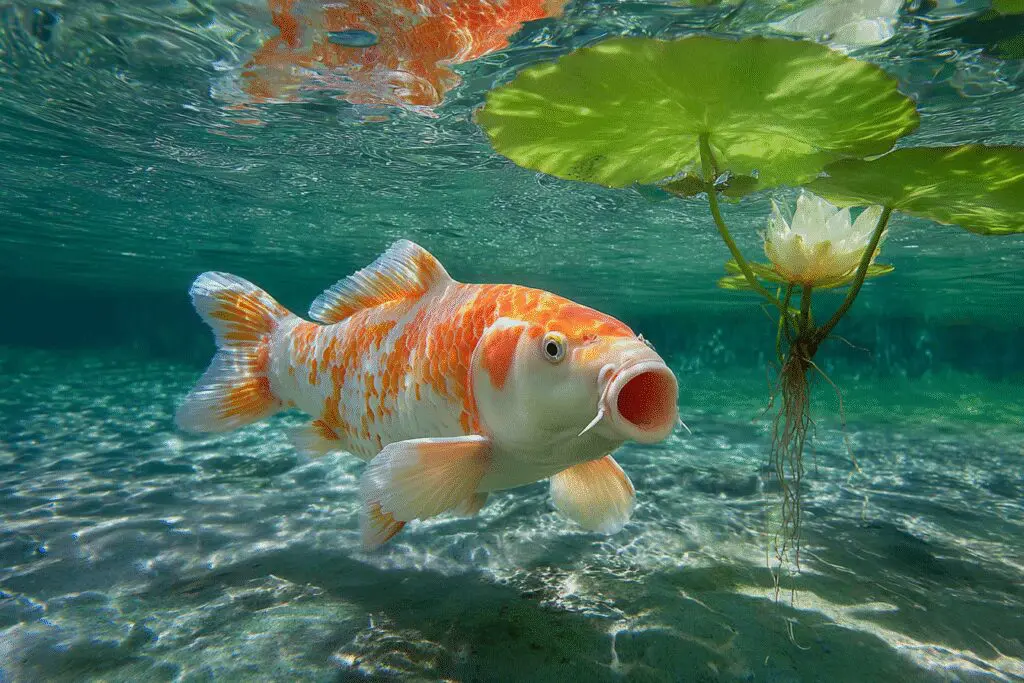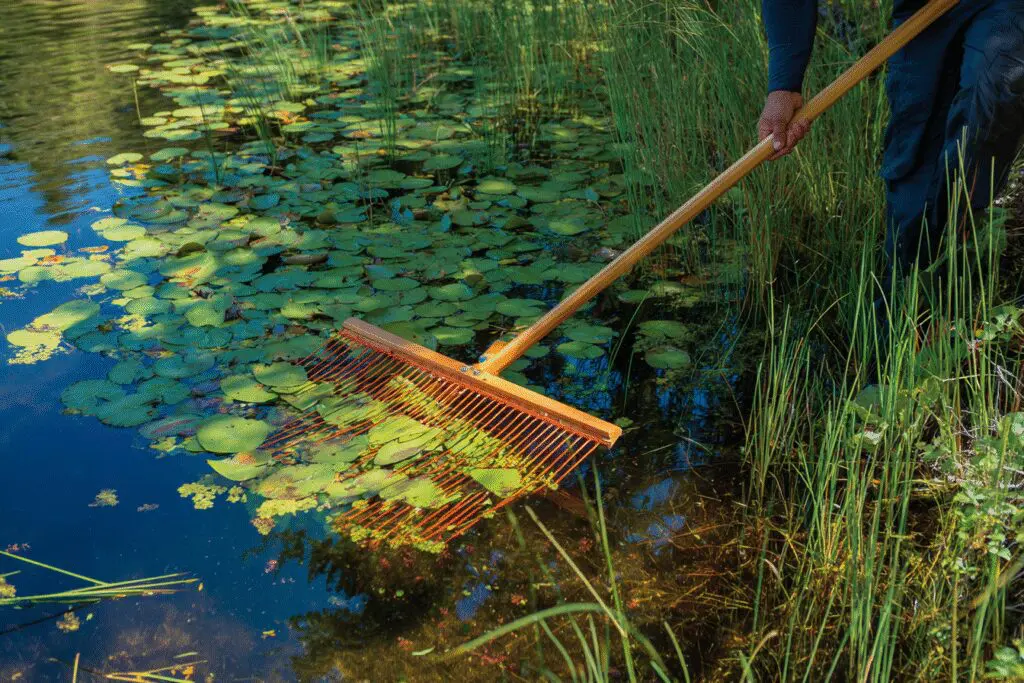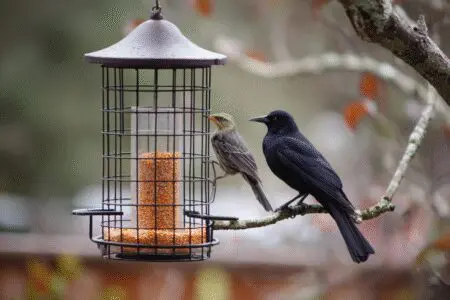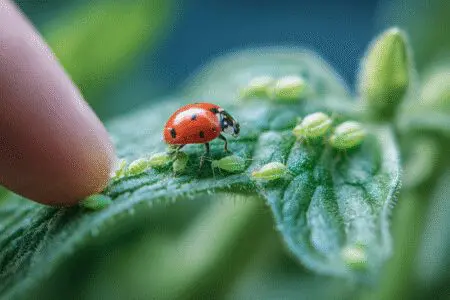Is your pretty pond hiding under a lot of leaves? You are not alone. A few lily pads can look nice. But they can grow fast and take over the water. This can stop sunlight, hurt fish, and make your pond look messy. Are you wondering how to get rid of lily pads? Do you want to make your pond beautiful again? If so, this is the right place. This guide gives you seven good and easy ways to control these plants.
It can feel like a big job to clear out lily pads. They have strong roots that hold them tight to the pond bottom. This makes them hard to pull out. But, if you know how they grow and use the right tips, you can clear your pond. This article gives a full plan for pond owners in the USA. It will help you find a fix that lasts. You will learn about pulling them by hand, using fish to help, and other good methods.
More in Home & Garden Category
How To Get Rid Of German Roaches
How to Get Rid of Black Widow Spiders
Why Are Lily Pads Taking Over My Pond?
First, it helps to know why the problem started. Lily pads grow very well in certain kinds of ponds. If your pond is like this, it is a perfect home for them.
Lily pads love calm, shallow water with lots of sun. They also need plenty of nutrients to grow. These nutrients come from fish waste, old leaves, and runoff from lawns with fertilizer. If your pond has a lot of nutrients, it is like a feast for lily pads. The more food they have, the faster they grow. Their big leaves block the sun from other plants. This helps them grow even more. Knowing this is the first step in learning how to get rid of lily pads for good.
Is It Bad to Have Too Many Lily Pads?
Lily pads give shade and cover for fish. But too many can be a problem. When lily pads cover most of a pond, they cause issues.
First, they block the sun. This stops other plants that make oxygen from growing. Less oxygen in the water is bad for fish. Second, when old lily pads die, they use up more oxygen. This can cause fish to die, mostly in the summer. Last, a thick mat of lily pads makes it hard to fish or have fun in the pond. So, it is important to control their growth for a healthy pond.
Method 1: Will Pulling Lily Pads by Hand Work?
Yes, pulling lily pads out by hand is a direct method. It is a good choice for small ponds. It also works for clearing small spots in a big pond. This method uses no chemicals. It gives you results you can see right away. It is hard work, but it works well if you do a good job. This is a basic way for how to get rid of lily pads.
What Is the Best Way to Pull Lily Pads by Hand for How to Get Rid of Lily Pads?
You will need a few tools and some strength to do this right.
- Rakes and Cutters: A long rake or a lily pad cutter helps you reach plants far from the shore. These tools help you cut the stems and pull out the leaves and roots.
- Get the Roots: The most important part is to get the roots. If you only pull the leaves, the plant will grow back fast. You need to dig in the mud to pull up the whole root.
- Keep at It: You will need to do this more than once. New plants can grow from small bits of root left behind. Check the area often and pull any new growth you see.
When Is the Best Time to Pull Them by Hand?
The best time to pull lily pads by hand is in the late spring or early summer. The plants are growing but have not stored much energy in their roots. This makes them weak and easier to pull out all the way.
Method 2: Can Fish Help With How to Get Rid of Lily Pads?
Using animals to control pests is called biological control. For lily pads, this often means adding grass carp to your pond. These fish are known for eating water plants. But, this method has its own rules and risks.
Are Grass Carp a Good Way for How to Get Rid of Lily Pads?
Grass carp can work very well. They love to eat water plants. But, there are key things to think about.
- Check Local Laws: In many states, you need a permit to add grass carp. Some states only let you use sterile grass carp. This stops them from breeding and taking over.
- They Eat a Lot: Grass carp are not picky. They will eat many types of water plants, not just lily pads. This could harm your pond by removing good plants too.
- Use the Right Number: You need to add the right number of fish for your pond size. Too few fish will not work. Too many fish can eat all the plants, which is also bad.
Using grass carp is a long-term plan. It will not give you fast results like pulling them by hand. But it can help control lily pads over time.
Method 3: How Can I Use Barriers to Stop Lily Pads?
A benthic barrier is a large sheet you put on the pond bottom. It blocks sunlight from the lily pad roots. This smothers and kills them. This is a non-chemical way that works well for small areas, like around a dock or a swimming spot.
How Do I Use a Barrier for an Effective Way on How to Get Rid of Lily Pads?
Using a barrier takes some planning.
- Pick the Right Material: The barrier should block light but let gas escape. You can buy special fabric for this. Heavy black plastic can also work.
- Hold It Down: The barrier needs weights to stay on the bottom. You can use rocks or bricks to hold it down. Make sure it lies flat on the pond floor.
- Give It Time: It takes at least a month for the barrier to kill the roots. You should leave it in place for a whole season if you can. After you take it out, you can rake away the dead plants.
This method is great for making plant-free spots without using chemicals.
Method 4: Will Cutting Lily Pads Under the Water Work?
Yes, cutting the lily pad stems under the water over and over can kill the plant. The leaves need sunlight to make food for the roots. If you keep cutting the stems, the roots will starve. This is a lot of work but is a good part of learning how to get rid of lily pads.
What Is the Best Way to Cut Lily Pads?
Doing this over and over is the most important part.
- Use the Right Tool: A weed cutter made for ponds works best. These tools have sharp blades that can cut the tough stems.
- Cut Them Low: You need to cut the stems as close to the pond bottom as you can.
- Repeat Often: You will need to cut the lily pads every few weeks while they are growing. Each time a new leaf shows up, cut it back. Over time, this will use up the plant’s energy, and it will die.
This method takes time, but it is a good way to clear your pond without chemicals.
Method 5: Can I Use Chemicals for How to Get Rid of Lily Pads?
Water-safe herbicides can be a fast way to kill lily pads. This is true for large ponds where pulling them by hand is too hard. But, using chemicals in water must be done with great care.
What Should I Know Before Using Chemicals?
Using herbicides in a pond is a big deal.
- Pick the Right Product: You must use a chemical that is made for use in water. Look for products with glyphosate or imazapyr. Always read the label. Make sure it is safe for fish and other animals.
- Follow the Rules: The label tells you how much to use and when to use it. Using too much can harm your pond. Using it at the wrong time may not work well.
- Think About Hiring a Pro: For big ponds, it is often best to hire a pro to apply chemicals. They have the right tools and skills to do the job safely.
According to the Purdue University Extension, knowing the plant is the first step. Their guide on Aquatic Plant Management says using the right chemical at the right time is key. This protects the pond and helps you succeed with how to get rid of lily pads.
Method 6: How Can I Reduce Pond Nutrients to Stop Lily Pads?
This is a long-term plan to stop lily pads from growing back. Lily pads love nutrients. If you reduce the “food” in your pond, it will be a harder place for them to live.
How Do I Lower the Nutrients in My Pond?
There are a few ways to put your pond on a diet.
- Add Air: An aeration system moves the water and adds oxygen. This helps good bacteria break down extra nutrients.
- Stop Runoff: Do not use fertilizer on your lawn near the pond. You can also plant a buffer of native plants around the pond. This will filter runoff water.
- Use Pond Dyes: A blue or black pond dye can shade the water. This slows the growth of lily pads by blocking some sunlight.
Reducing nutrients will not kill lily pads right away. But it is the best way to stop them from being a problem later.
Method 7: Why Is a Mix of Methods the Best Plan for How to Get Rid of Lily Pads?
The best way to fix a big lily pad problem is to use a few of these methods together. No single fix is perfect. When you combine methods, you attack the problem in many ways.
For example, you could start by pulling out as many lily pads as you can. Then, you could put a barrier in your swimming area. At the same time, you could add an aeration system to lower nutrients for the long run. This combined plan is the main idea for how to get rid of lily pads and keep them away. It fixes the current problem and the reasons it started.
What Is the Most Important Thing to Remember for How to Get Rid of Lily Pads?
Clearing a pond of lily pads takes time and work. If you choose to pull them, use a barrier, or use chemicals, you must keep at it. By using these seven methods, you can get your pond back. It can be a healthy, pretty, and balanced place once again. You will be able to enjoy the clear water and healthy fish that live there.
FAQ – How to Get Rid of Lily Pads

How does using a barrier help in controlling lily pads?
A benthic barrier, placed on the pond bottom, blocks sunlight from reaching the roots, smothers the plants, and is effective for small areas without the use of chemicals, especially when left in place for a whole season.
Can fish such as grass carp help control lily pad growth?
Grass carp can help manage lily pads as they eat aquatic plants, but their use requires adherence to local laws, appropriate stocking levels, and awareness that they may also consume beneficial plants.
Does pulling lily pads by hand effectively remove them?
Hand-pulling is effective for small ponds or localized areas, particularly when roots are carefully removed, but it requires effort and repeated actions to prevent regrowth.
Is it harmful to have too many lily pads in my pond?
Yes, excessive lily pads can block sunlight, reduce oxygen levels by decomposing, and hinder recreational activities, ultimately harming fish health and disrupting the pond’s ecosystem.
Why are lily pads taking over my pond?
Lily pads grow rapidly in calm, shallow waters with abundant sunlight and nutrients from fish waste, old leaves, or fertilizer runoff, which creates ideal conditions for their proliferation and can lead to overgrowth.




